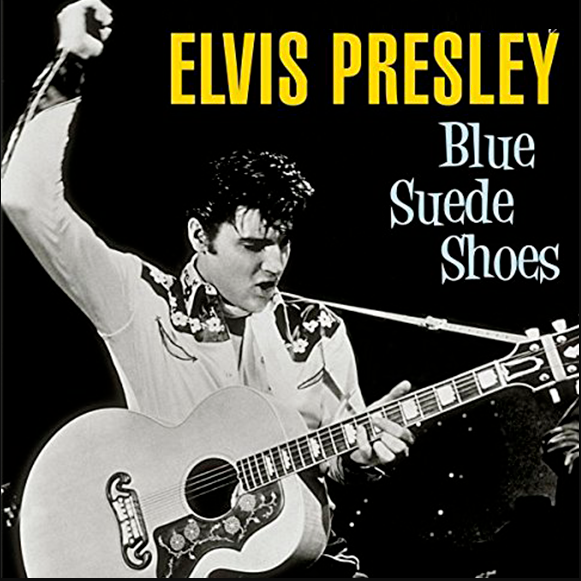
An Anthem of Cool: “Blue Suede Shoes” and the Birth of Rock and Roll
There are certain songs that, upon hearing the first few notes, immediately transport you back to a specific time and place. For many, especially those who came of age in the vibrant, rebellious 1950s, Elvis Presley’s rendition of “Blue Suede Shoes” is one such immortal anthem. It wasn’t just a song; it was a cultural touchstone, a swaggering declaration of individuality that perfectly encapsulated the nascent spirit of rock and roll.
While many might instinctively associate it with Elvis, the truth is that “Blue Suede Shoes” was originally written and recorded by the brilliant rockabilly pioneer Carl Perkins in 1955. His version, released on Sun Records, was a massive success, soaring to number 2 on the Billboard charts and even making inroads on the R&B and Country charts, a significant crossover achievement for the time. However, it was Elvis Presley’s electrifying cover, released on his self-titled debut album, “Elvis Presley,” in March 1956, that truly propelled the song into the stratosphere of pop culture immortality. Elvis’s single release of “Blue Suede Shoes” (often as a B-side to “Heartbreak Hotel”) reached number 20 on the Billboard Pop Singles chart in 1956, cementing its place in the public consciousness and becoming a cornerstone of his early, meteoric rise.
The story behind the song itself is as captivating as its enduring appeal. Legend has it that the inspiration for “Blue Suede Shoes” emerged from a conversation between Carl Perkins and Johnny Cash during a tour. Cash recounted a tale of a fellow airman in Germany who, despite the military’s regulation black shoes, referred to his footwear as “blue suede shoes” and was fiercely protective of them, warning anyone not to scuff or step on them. This anecdote, combined with Perkins later witnessing a young man at a dance scolding his girlfriend with a similar warning – “Don’t step on my suedes!” – sparked the lyrical genesis of the song. He famously jotted down the initial lines on a brown paper potato sack. The opening, “Well, it’s one for the money, two for the show, three to get ready, now go, cat, go!” borrowed from a traditional nursery rhyme, set an immediate, infectious rhythm that was impossible to resist.
The meaning of “Blue Suede Shoes” is deceptively simple yet profoundly resonant. It’s an ode to personal pride, to the small, often superficial, things that can hold immense significance to an individual. In a post-war America where conformity was often prized, the song championed a defiant individualism, asserting that one’s personal style and cherished possessions were worth defending, even above all else. “You can knock me down, step in my face, slander my name all over the place,” Elvis snarled, “do anything that you want to do, but uh-uh, honey, lay off of my shoes.” This wasn’t just about footwear; it was about autonomy, about drawing a line in the sand and proclaiming, “This is mine, and you will respect it.” For a generation eager to break free from the strictures of their parents’ world, this message of self-assertion, delivered with a rebellious rockabilly beat, was intoxicating.
Beyond its chart performance and origin story, “Blue Suede Shoes” became synonymous with Elvis Presley’s image. While he initially didn’t own a pair, the song’s popularity quickly led him to acquire custom-made blue suede shoes, which became an iconic part of his stage persona. His electrifying performances on television shows like “The Milton Berle Show” and “The Steve Allen Show” introduced him, and rock and roll, to millions of American households, often to the consternation of older generations. The song, with its raw energy and youthful exuberance, was a perfect vehicle for Elvis’s magnetic stage presence, his swiveling hips and rebellious sneer becoming symbols of a cultural revolution.
Looking back, “Blue Suede Shoes” is more than just a classic rock and roll song; it’s a vibrant snapshot of a pivotal moment in American history. It’s the sound of youth finding its voice, of a new musical genre exploding onto the scene, and of a cultural landscape forever altered. For those who remember it firsthand, it evokes the thrill of sock hops, the excitement of new freedoms, and the undeniable cool of a young man named Elvis who, with a pair of blue suede shoes and a voice that rattled the foundations, changed the world. It’s a melody that, even now, can send a shiver down the spine, a nostalgic whisper of rebellion and exuberance that still rings true.